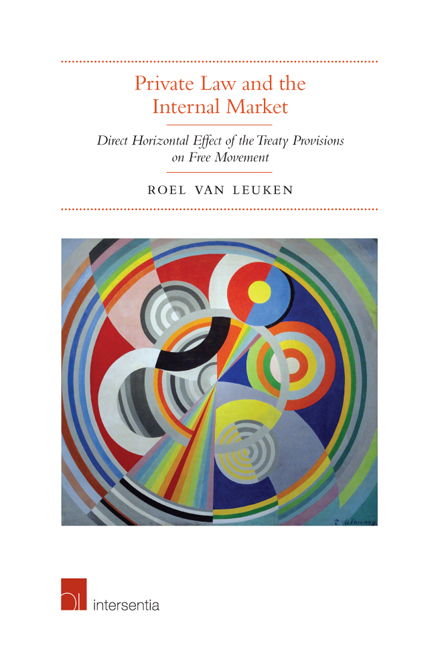 Private Law and the Internal Market
Private Law and the Internal Market Book contents
- Frontmatter
- Preface
- Contents
- Table of Cases
- List of Abbreviations
- Chapter 1 Introduction
- Part I Direct Horizontal Effect: Concept and Application in Competition Law
- Part II Direct Horizontal Effect: Internal Market
- Part III Justifications
- Chapter 8 The System of Written and Unwritten Justifications
- Chapter 9 Justifications in Private Law Relationships
- Chapter 10 Summary and Conclusions
- Bibliography
- Index
Chapter 9 - Justifications in Private Law Relationships
from Part III - Justifications
Published online by Cambridge University Press: 27 September 2018
- Frontmatter
- Preface
- Contents
- Table of Cases
- List of Abbreviations
- Chapter 1 Introduction
- Part I Direct Horizontal Effect: Concept and Application in Competition Law
- Part II Direct Horizontal Effect: Internal Market
- Part III Justifications
- Chapter 8 The System of Written and Unwritten Justifications
- Chapter 9 Justifications in Private Law Relationships
- Chapter 10 Summary and Conclusions
- Bibliography
- Index
Summary
INTRODUCTION
Whether it is a trade union that has called a strike and is being sued for damages by an employer or employers’ organisation for alleged infringement of Article 34, 49 or 56 TFEU (see paragraphs 6, 80 and 83 above), or a private law association that is confronted with an action for annulment of a rule or regulation that is contrary to Article 45 or 63 TFEU (see for example paragraphs 57 and 69), an individual sued for having infringed a free movement provision that has direct horizontal effect should be able to rely on an appropriate ground of justification. Although in this context many will look to the principle of party autonomy, reliance on this principle alone will not do (section 9.2.). But then, what does? Research of the private law potential of the exceptions provided for in the Treaty (section 9.3.), the rule of reason exceptions (section 9.4.) and the justification on the ground of protecting fundamental rights (section 9.5.) should produce an answer to this important question (section 9.6.).
FREE MOVEMENT PROVISIONS AND PARTY AUTONOMY
The EEC Treaty, signed in Rome on 25 March 1957, marked the starting point of a long-term process of (economic) integration between European states. Its main objective was the creation of a common market, a concept that referred to ‘the elimination of all obstacles to intra-Community trade in order to merge the national markets into a single market bringing about conditions as close as possible to those of a genuine internal market.’ The Court's reference to ‘internal market’ predated the introduction of the concept in the Treaty; it was not until 1 July 1987 – when the Single European Act entered into force – that the concept made its appearance in the EEC Treaty along with the ‘common market’. Since 1 December 2009, the date on which the Lisbon Treaty entered into force, ‘internal market’ has been the only term used to give expression to the market integration objective of EU law.
The internal market comprises an area without internal frontiers in which there is full mobility of production factors. It thus enables individuals to work, deploy capital, buy and sell goods and receive or perform services across borders. The required convergence of national markets into one European market takes place by two complementary means.
- Type
- Chapter
- Information
- Private Law and the Internal MarketDirect Horizontal Effect of the Treaty Provisions on Free Movement, pp. 151 - 184Publisher: IntersentiaPrint publication year: 2017


